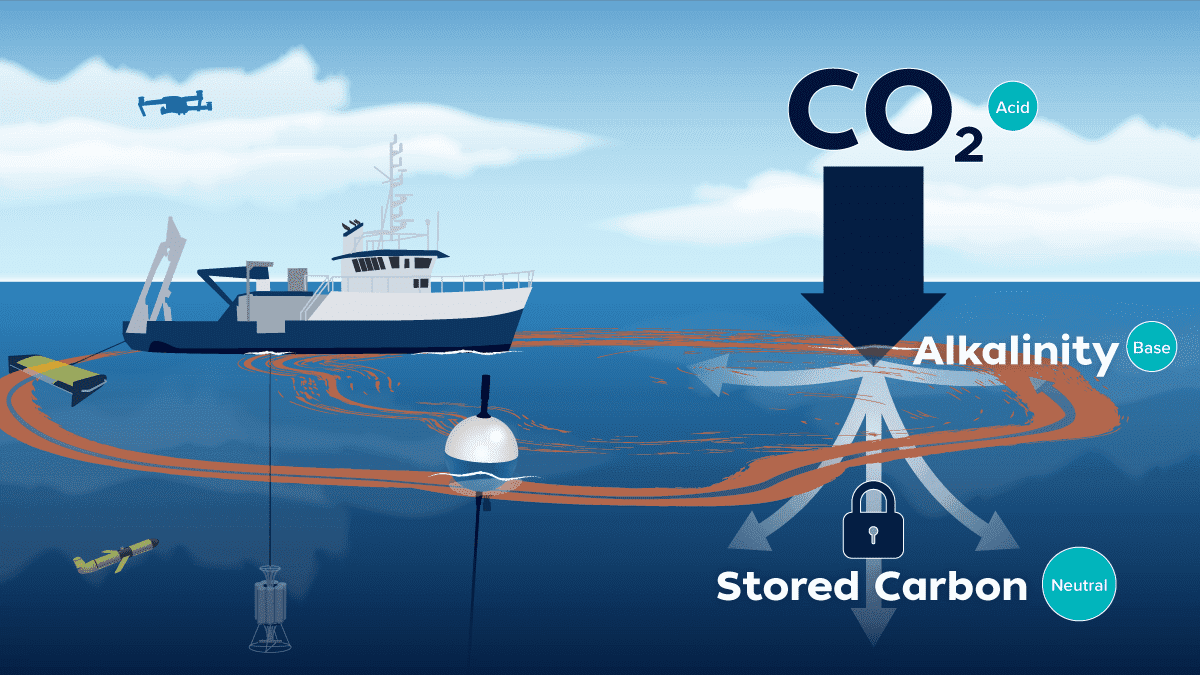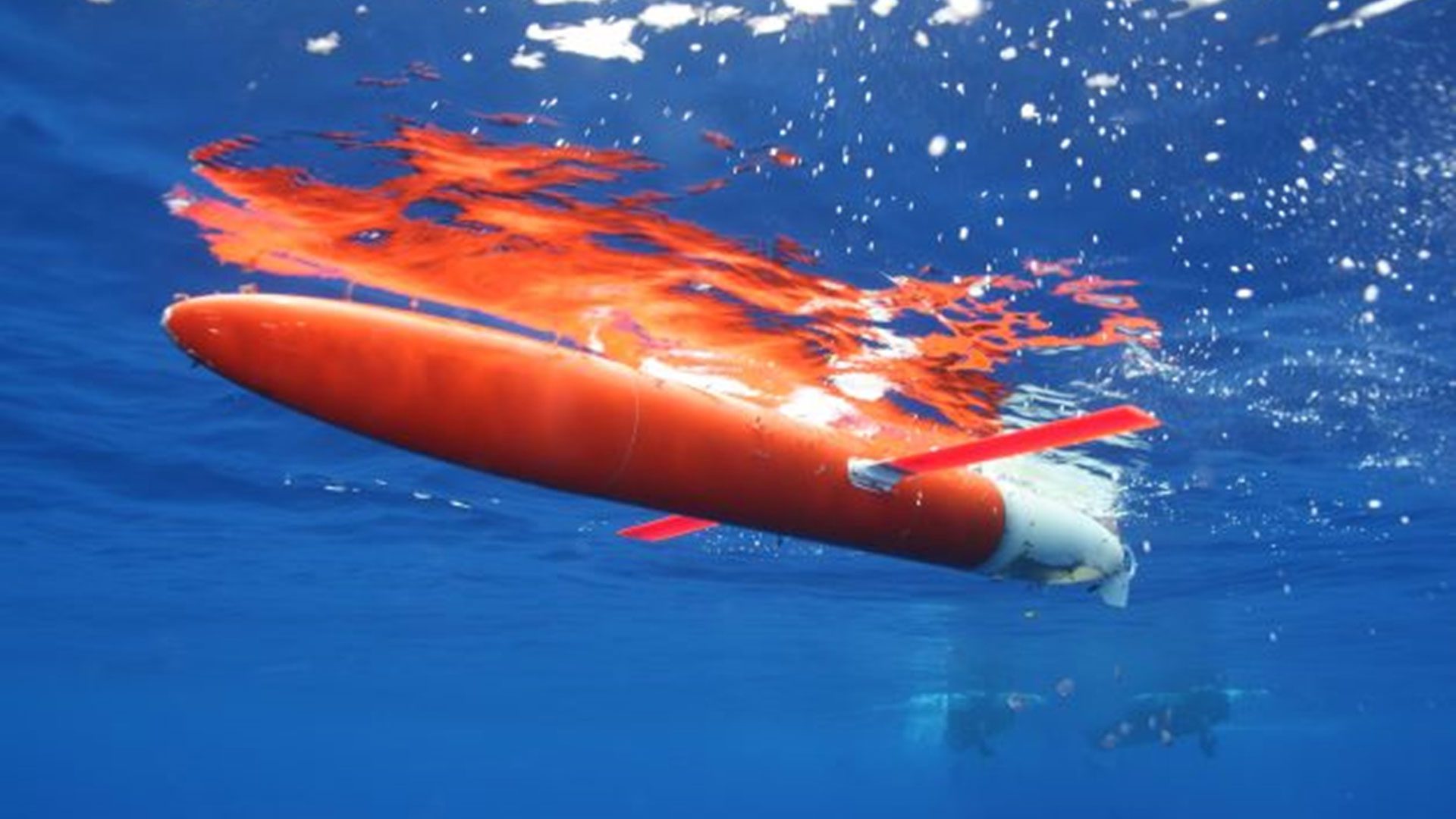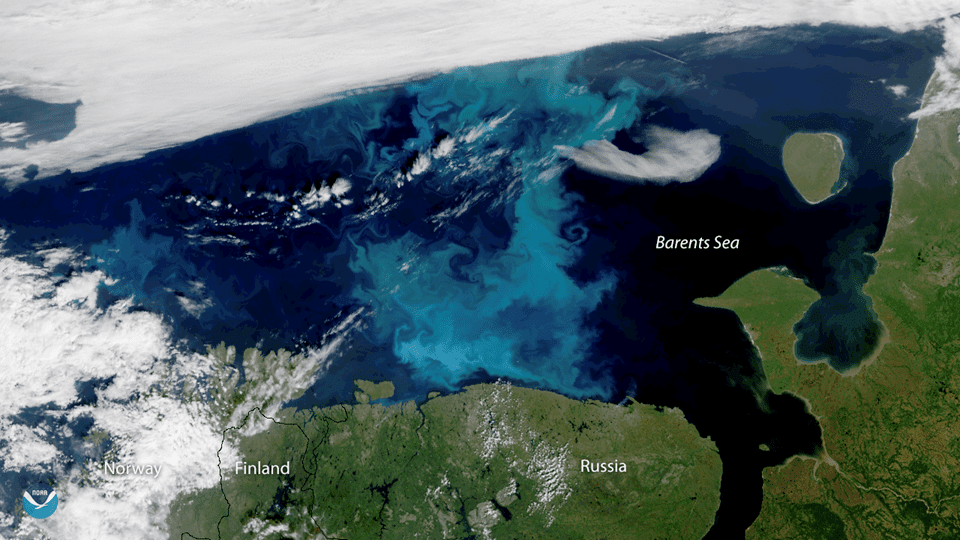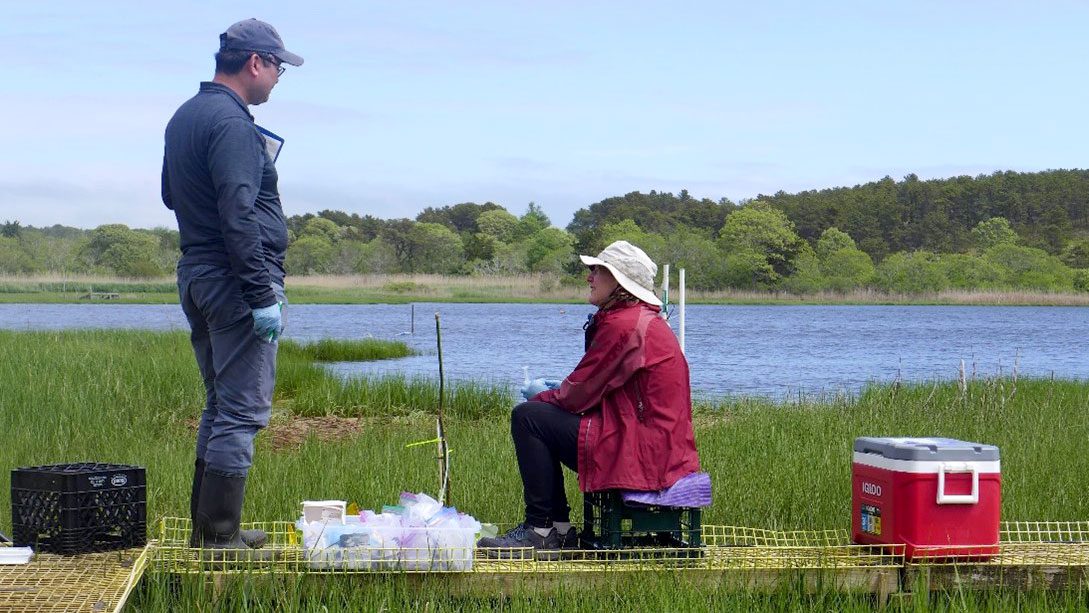WHOI Projects Awarded Funding to Support Research and Development of Marine Carbon Dioxide Removal
Woods Hole, Mass. (Thursday, Sept 7, 2023) – Woods Hole Oceanographic Institution (WHOI) researchers are among the 17 projects that have been awarded funding by NOAA’s Ocean Acidification Program on behalf of the National Oceanographic Partnership Program (NOPP). The funding is the first large-scale public investment of research specifically focused on marine Carbon Dioxide Removal (mCDR), with a goal of expanding understanding of mCDR, including co-benefits and risks, and addressing gaps in the science needed to build regulatory frameworks for testing and scaling of mCDR approaches.
The projects range from macroalgal cultivation, ocean alkalinity enhancement, enhanced weathering, and electrochemical approaches, and include lab experiments, modeling, field trials, and engaging communities to understand the impacts and effectiveness of various marine carbon dioxide removal strategies. Much of the work aligns with recommended research priorities of the NOAA Strategy for Carbon Dioxide Removal Research.
Four WHOI led or co-led projects are among the funding recipients, including:
Adam Subhas, Associate Scientist, Marine Chemistry & Geochemistry
Project: Assessing the laboratory and field responses of diatoms and coccolithophores to ocean alkalinity enhancement
Ocean Alkalinity Enhancement (OAE) is a carbon dioxide removal approach that enhances the ocean’s natural ability to remove carbon from the atmosphere, which is a critical part of the Earth’s carbon cycle and a moderating influence on climate change. With colleagues from Rutgers University, Subhas’s project aims to address potential impacts of OAE on phytoplankton by conducting laboratory and field experiments. Laboratory experiments will assess the effects of ocean alkalinity enhancement on representative diatom and coccolithophore species, and then the team will study the response of natural diatom and coccolithophore communities to ocean alkalinity enhancement during research expeditions and OAE field trials.
According to Subhas, “Ocean alkalinity enhancement, or OAE, accelerates the ocean’s natural ability to safely and effectively take up carbon dioxide while balancing the ocean’s chemistry at the same time. We need the science to tell us whether OAE is something that should become a reality or not. Does it work? How well does it work? What are its broader effects on ocean ecosystems? It is critical that science stays out in front of any industrial applications. This work will provide valuable insights for OAE practitioners, modelers, and stakeholders, and to generate important measurements of OAE biological responses in the field.”
More information on this project can be found here: https://locness.whoi.edu/
David Nicholson, Associate Scientist, Marine Chemistry & Geochemistry
Project: Assessing Carbon Dioxide Removal and Ecosystem Response for an Ocean Alkalinity Enhancement Field Trial
This project will measure carbon removal and ecosystem responses resulting from a separately funded large-scale ocean alkalinization field trial in the Gulf of Maine. WHOI is working in partnership with MBARI and MRV Systems, LLC, with next-generation chemical sensors integrated with underwater robots. Pairing these technologies may offer a more nimble and cost-effective option for evaluating mCDR. A fleet of Spray ocean gliders will track a patch of seawater with elevated alkalinity and ‘tagged’ with an inert dye and monitor changes in pH (measure of how alkaline or acidic the water is). The gliders can identify changes from baseline data collected prior to the start of the trial as well as other measurements and model simulations collected as part of the larger experiment. An engineering phase will include housing modifications and electrical integration of the pH and dye sensors into the glider body, as well as the development of firmware that controls the glider and the incorporated sensors.
“As mCDR approaches emerge, there is a huge need to develop robust methods for assessing their efficacy and ecosystem response,” said Nicholson. “Underwater gliders equipped with sensors for carbon and ecosystem parameters can provide the distributed measurements needed to do so.” “Using underwater robotic systems, such as Spray gliders equipped with novel carbon sensors, we hope to develop cost-effective and scalable approaches to monitoring, reporting and verification of ocean-based carbon removal strategies,” he added.
Dennis McGillicuddy, Senior Scientist, Applied Ocean Physics & Engineering
Project: Multiscale observing system simulation experiments for iron fertilization in the Southern Ocean, Equatorial Pacific, and Northeast Pacific
McGillicuddy is leading a team that includes WHOI’s Ken Buesseler and Gordon Zhang, along with partners Matt Long and Kristen Krumhardt at the National Center for Atmospheric Research (NCAR), and John Dunne and Charles Stock at NOAA’s Geophysical Fluid Dynamics Laboratory. This project will address the effectiveness of ocean iron fertilization as a carbon dioxide removal technique, identify potential unintended ecological consequences, and determine the necessary systems for monitoring carbon and ecosystem changes. The study addresses questions regarding the magnitude, duration, observing systems, time scales, and impacts on ecosystem services of iron fertilization and will target field trials in three regions: the Southern Ocean, the Equatorial Pacific, and the Subarctic Pacific.
The broader scientific community will have input to improve the observing system simulation experiments, and these global models, when run over many years, will also investigate the ocean's capacity to absorb atmospheric carbon dioxide by means of iron fertilization and the fundamental changes that the method may cause to ocean ecosystems.
“Iron is a critical limiting nutrient for phytoplankton in the ocean,” said McGillicuddy. “Iron fertilization adds this limiting nutrient to promote phytoplankton blooms as a way to take up carbon dioxide and store carbon when they sink, but unknowns on the effectiveness, measurement and monitoring need to be addressed. This project uses fertilization experiments that are larger and longer than prior studies to help address some of these unknowns.”
Zhaohui Aleck Wang, Associate Scientist, Marine Chemistry & Geochemistry
Project: Tidal wetlands as a low pH environment for accelerated and scalable olivine dissolution
Wang is a co-PI along with the U.S. Geological Survey, NOAA National Marine Fisheries Service, and Project Vesta. WHOI’s Robert Sohn is also part of this team. The four-year project aims to test whether a carbon capture technology known as “enhanced weathering” increases ocean alkalinity by adding rocks with ultrabasic minerals, particularly in coastal ecosystems like tidal wetlands. This project examines the safety, efficacy, co-benefits, and potential for large-scale implementation of enhanced weathering in tidal wetlands as a method of carbon dioxide removal and local-scale ocean acidification mitigation.
As a large-scale demonstration, the project team will collaborate with U.S. National Park Service to deploy olivine sand in a designated area as part of the Herring River Restoration, a 400-hectare salt marsh ecosystem project on Cape Cod, MA.
“Because of the uniqueness of tidal wetlands as natural (Blue) carbon capture, storage, and export systems, the project team will use ultrabasic minerals, such as olivine sand, to accelerate CO2 capture in these ecosystems,” said Wang.
“We are incredibly proud of our WHOI project teams who have been selected for funding by NOPP. Their vitally important work will accelerate our understanding of ocean carbon cycling and marine CDR strategies,” said Peter de Menocal, WHOI President and Director. “Climate solutions are ocean solutions. By investing in exceptional teams and breakthrough technologies, we are accelerating our progress toward the global climate action goals outlined by the U.N.”
NOPP has provided $24.3 million to fund the 17 projects with partners from 47 institutions. The Inflation Reduction Act provided $14.36 million to fund 10 of the projects as part of the Investing in Coastal Communities and Climate Resilience provision under NOAA’s Integrated Ocean Observing System IRA priorities. This investment supports climate mitigation through research as part of President Biden’s Investing in America agenda.
An additional $10 million provided by the NOAA’s National Oceanographic Partnership Program, Ocean Acidification Program and Global Ocean Monitoring and Observing Program, the Department of Energy’s Office of Fossil Energy and Carbon Management and Water Power Technologies Office, Office of Naval Research, National Science Foundation, and the ClimateWorks Foundation support seven more marine carbon dioxide removal research projects.
Read NOAA’s announcement here.
About Woods Hole Oceanographic Institution
The Woods Hole Oceanographic Institution (WHOI) is a private, non-profit organization on Cape Cod, Massachusetts, dedicated to marine research, engineering, and higher education. Established in 1930, its primary mission is to understand the ocean and its interaction with the Earth as a whole, and to communicate an understanding of the ocean’s role in the changing global environment. WHOI’s pioneering discoveries stem from an ideal combination of science and engineering—one that has made it one of the most trusted and technically advanced leaders in basic and applied ocean research and exploration anywhere. WHOI is known for its multidisciplinary approach, superior ship operations, and unparalleled deep-sea robotics capabilities. We play a leading role in ocean observation and operate the most extensive suite of data-gathering platforms in the world. Top scientists, engineers, and students collaborate on more than 800 concurrent projects worldwide—both above and below the waves—pushing the boundaries of knowledge and possibility. For more information, please visit www.whoi.edu




